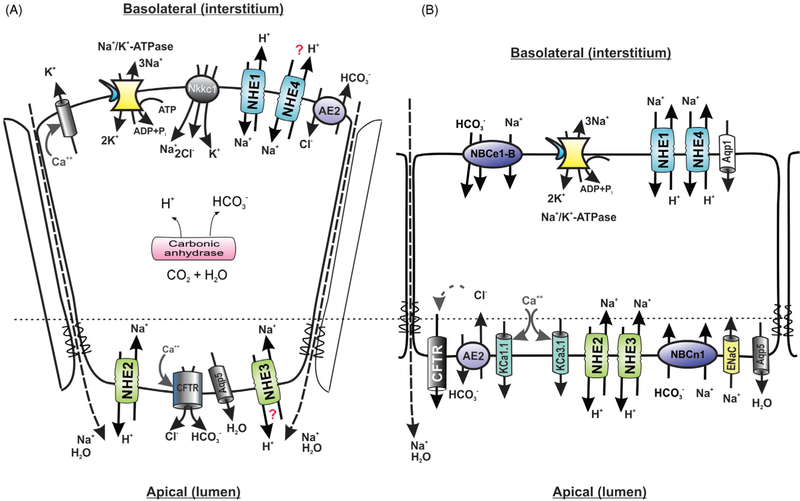Figure 1.
Simplified model of basolateral and apical electrolyte transport in the (A) acinar and (B) ductal cells of the salivary (parotid) gland. NKCC1, Na-K-Cl cotransporter, SLC12A2; NHE1–4, Na+/H+ exchangers 1 to 4, SLC9A1-A4; AE2, anion exchanger 2, SLC4A2; CFTR, cystic fibrosis transmembrane conductance regulator; AQP1, aquaporin 1; AQP5, aquaporin 5; NBCe1-B, major splice variant of the electrogenic Na+/HCO3− cotransporter (NBCe1, SLC4A4); NBCn1, electroneutral sodium/bicarbonate cotransporter, SLC4A7; ENac, electrogenic Na+ channels, SCNN1; KCa1.1 and KCa3.1, calcium-activated potassium channels, KCNMA1 and KCNN4, respectively. For detailed reviews of the key players and mechanism involved, see Ohana (218) and Roussa et al. (255). Question marks indicate controversial contribution of individual transport proteins.

